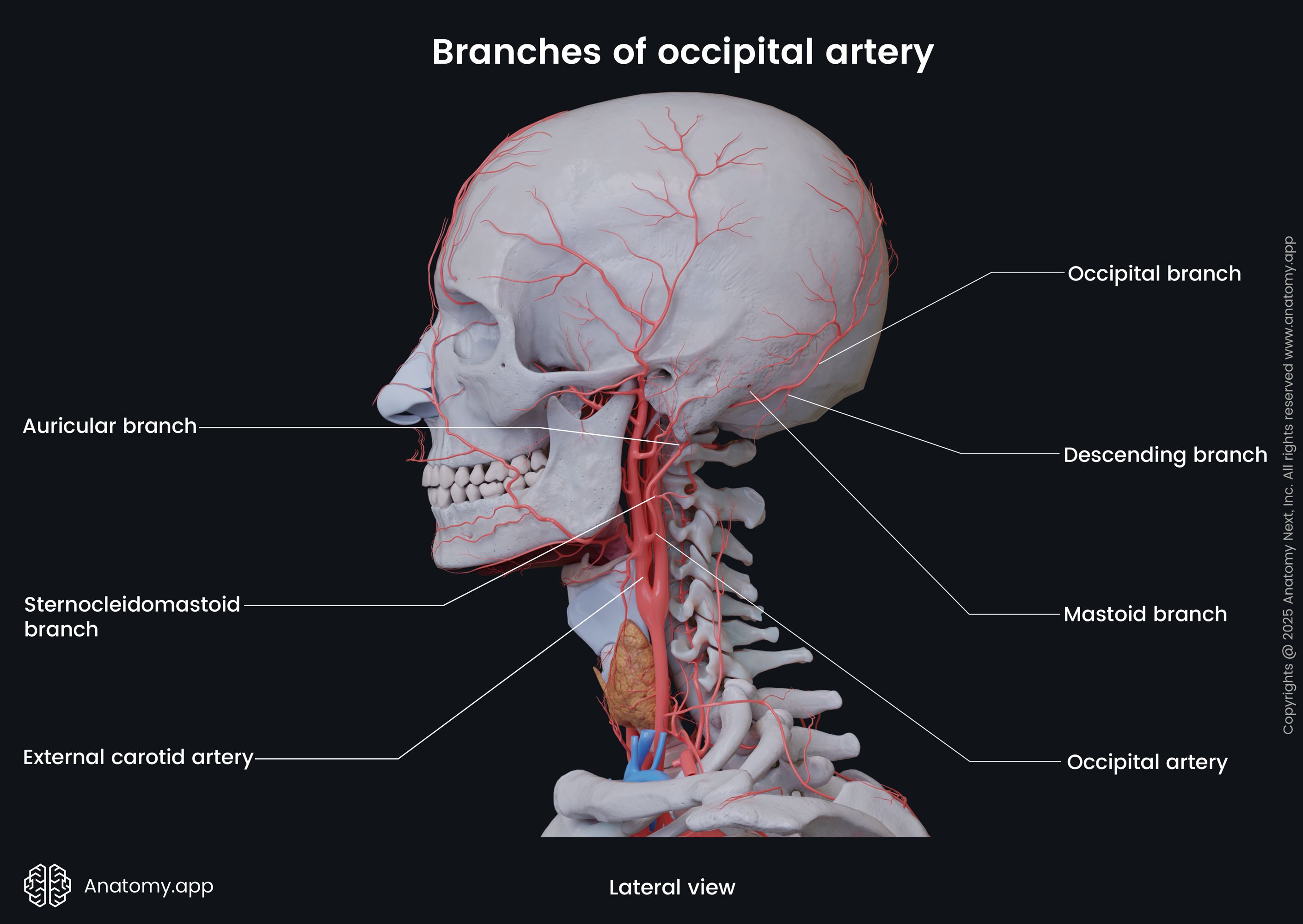- Anatomical terminology
- Skeletal system
- Joints
- Muscles
- Heart
- Blood vessels
- Blood vessels of systemic circulation
- Aorta
- Blood vessels of head and neck
- Arteries of head and neck
- Veins of head and neck
- Blood vessels of upper limb
- Blood vessels of thorax
- Blood vessels of abdomen
- Blood vessels of pelvis and lower limb
- Blood vessels of systemic circulation
- Lymphatic system
- Nervous system
- Respiratory system
- Digestive system
- Urinary system
- Female reproductive system
- Male reproductive system
- Endocrine glands
- Eye
- Ear
Occipital artery
The occipital artery (Latin: arteria occipitalis) is one of the posterior branches of the external carotid artery that arises below the posterior belly of the digastric muscle. The occipital artery supplies blood to the back of the scalp, sternocleidomastoid, trapezius, deep muscles of the back, and dura mater of the posterior cranial fossa.

Course of occipital artery
After it emerges from the external carotid artery, the occipital artery passes posteriorly to the level of the posterior belly of the digastric muscle. Then it crosses the common carotid artery, internal jugular vein, and three cranial nerves - the hypoglossal (CN XII), vagus (CN X), and accessory (CN XI) nerves.

The occipital artery ascends between the transverse process of the atlas (vertebra C1) and the mastoid process of the temporal bone, reaching the lateral border of the rectus capitis lateralis muscle. Then the artery passes in the occipital groove of the temporal bone being covered by the sternocleidomastoid, splenius capitis, longissimus capitis, and digastric muscles and resting upon the obliquus capitis superior, rectus capitis, and semispinalis capitis muscles.

Further, the occipital artery changes its course, turning upwards to penetrate the deep cervical fascia. The artery then ascends in the dense superficial fascia of the scalp, where it divides into many branches that supply the skin of the back of the scalp.
Occipital artery branches
The occipital artery has two main branches: the upper and the lower branch. The upper branch arises as the occipital artery passes the accessory nerve (CN XI). Then this branch descends posteriorly to enter the deep surface of the sternocleidomastoid along with the accessory nerve.
The lower branch arises near the origin of the occipital artery, descends backward, enters the sternocleidomastoid, and forms anastomoses with the sternocleidomastoid branch of the superior thyroid artery. The lower branch also gives off a mastoid branch that enters the posterior cranial fossa via the mastoid foramen to supply the dura mater in this region.